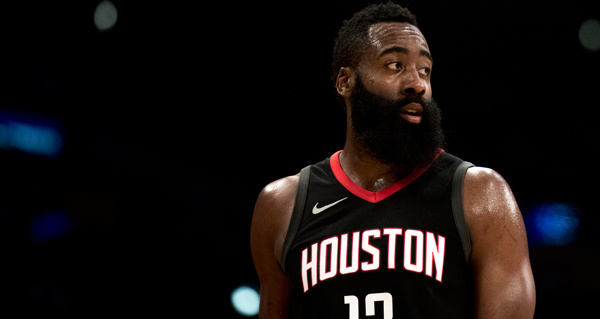Individual maximum salaries are detailed in Article II, Section 7(a) of the current Collective Bargaining Agreement.
How individual maximum salaries work
For the individual maximum, it is best to focus on when a player signs a new contract because that is when the restrictions affect players and teams. After all, the CBA does not prevent a player from receiving 8% raises on an existing contract because they went over that season’s max line.
Emphasizing those times, there is a primary set of rules that apply to the vast majority of players in a vast majority of situations, with some exceptions that can become relevant.
The most common scenario
There are two factors that primarily shape and limit the most a free agent can make in first-year salary on a new contract: years of NBA experience and that season’s salary cap number.
The calculations used to be somewhat complicated but the 2017 CBA simplified the numbers so they are now wonderfully straightforward:
0-6 seasons of NBA experience- up to 25% of the salary cap for that season
7-9 seasons of NBA experience- up to 30% of the salary cap for that season
10+ seasons of NBA experience- up to 35% of the salary cap for that season
Exception 1: The 105% rule
As detailed in Article II, Sections 7(a)(i), (ii) and (iii), the simplest of the exceptions is that no player’s maximum salary can be less than 105% of his salary in the previous season. In recent times both the salary structure and max contract structure have been increasing so it has been largely irrelevant but that could change due to a reduction in revenue (the next national TV contract, etc) or new formulas for either part of the equation.
The most likely players to make this rule relevant again would be Designated Veterans or Designated Rookies who do not qualify for elevated status on their next contract since they will be at a high wage without the corresponding jump in experience opening up a higher maximum salary.
Exception 2: Designated Rookie contracts/extensions
Covered in Article II, Section 7(a)(i)(A) and (B), the Designated Rookie provision allows players with six or fewer years of NBA experience to receive the higher 30% maximum on contracts and/or extensions. There is a separate CBA Encyclopedia entry that goes through qualification, execution and much more.
Exception 3: Designated Veteran contracts/extensions
Detailed in its own CBA Encyclopedia entry that includes eligibility requirements and other pertinent information, Designated Veteran contracts and extensions allow players with seven to nine seasons of NBA experience to receive the 35% maximum. It is laid out in Article II, Section 7(a)(ii) of the CBA.
Should there be individual maximum restrictions?
This is an incredibly complicated question without a clear answer. One of the effects of the NBA’s individual maximum is that it artificially reduces the amount the best players can make, which creates complications since those individuals inspire so much of fan interest in the league and sport. However, supporters of the individual maximum can counter that those players have much better opportunities for endorsements and off the court income, often in the form of opportunities not available to rank and file players.
Individual maximum salaries also broadly help rein in overall spending at both the team and league level since the NBA uses a soft cap and also narrows the range in salaries league-wide while opening up more money for the league’s rank and file. Whether those impacts are positive or negative is a matter of opinion and perspective.
Additionally, having both a soft cap structure and lower individual maximum salaries opens the door for players to join up and create superteams, as it reduces the margin between offers for the best players since the starting salary of a free agent would be the same whether they return or take their talents elsewhere.
Will individual maximum restrictions continue or change in the future?
Expect the basic structure to stay in place, as there appears to be some form of consensus on both sides of the negotiating table that they have a purpose. Considering max players Chris Paul and LeBron James were both key parts of the 2016 CBA negotiations and prospective free agents in 2017, it would stand to reason that those talks represented the largest recent chance to eliminate individual maximum salaries and they are still around.
Building off the Designated Rookie structure by adding Designated Veteran contracts and extensions creates a more viable structure that gives a player’s current team a material advantage in negotiations for the best of the best helps create a more viable system but we will have to see how it works out for players outside the no-brainer group, which may take another few seasons to fully shake out.
One potential modification worth considering is something I called the “Cornerstone Exception,” which would retain the individual maximum structure but allow certain teams and player to sign a contract where their entire salary is not subject to the individual maximum.



